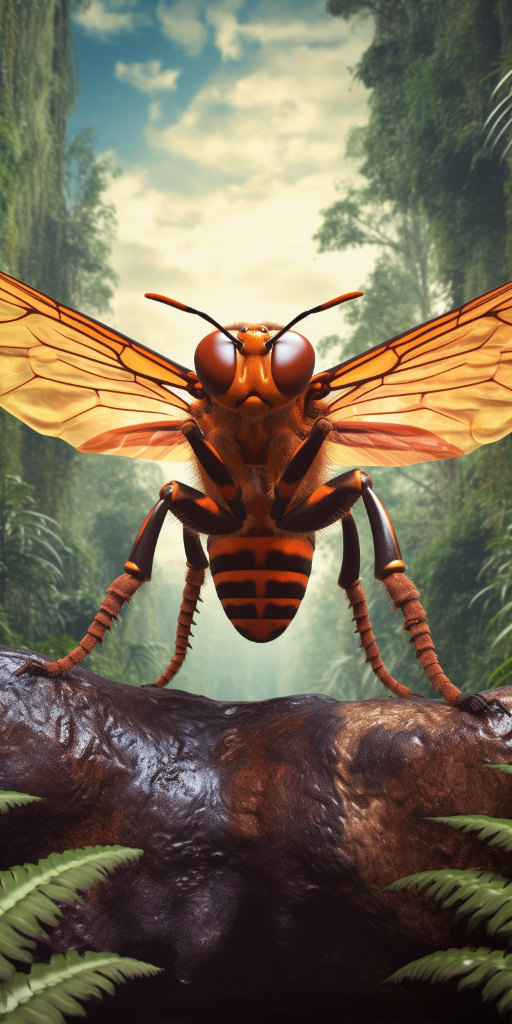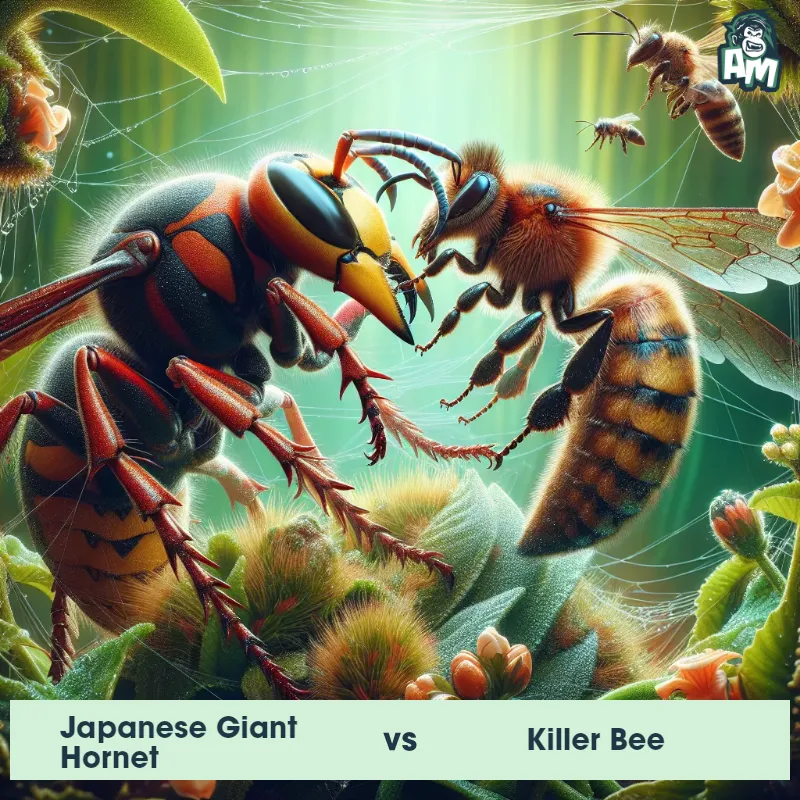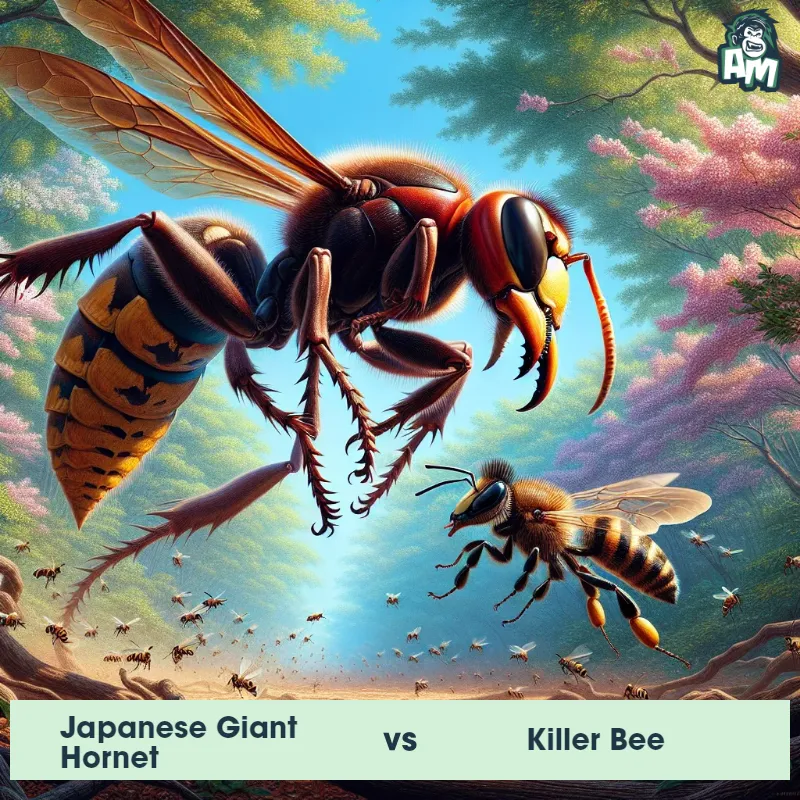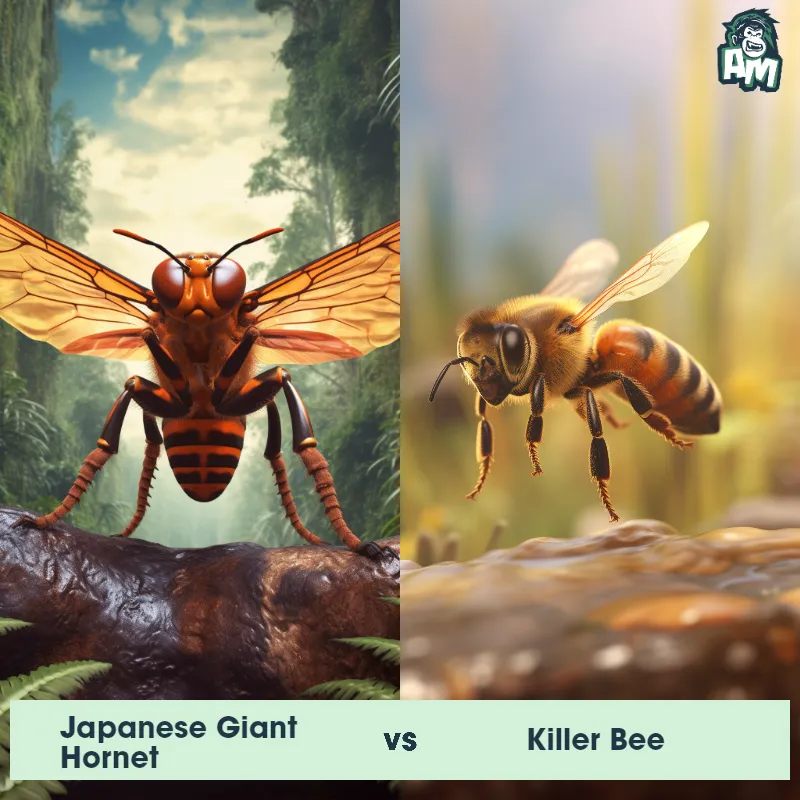The Japanese Giant Hornet
The Japanese Giant Hornet, also known as Vespa mandarinia japonica, is the largest hornet species in the world. These fearsome insects can reach up to 2 inches in length and have a wingspan of approximately 3 inches. They are easily recognizable by their banded orange and black abdomen, large eyes, and powerful mandibles. Japanese Giant Hornets are highly aggressive and known for their painful sting, which can be fatal to humans if stung multiple times.

| Japanese Giant Hornet | |
|---|---|
| Size | Up to 2 inches (5.1 cm) |
| Weight | Up to 2.8 grams (0.1 oz) |
| Speed | Speed: 25 mph (40 km/hr) |
| Key Strength | Powerful mandibles and venomous sting |
| Biggest Weakness | Vulnerable to pesticides and smoke |
| Scientific Name | Vespa mandarinia japonica |
| Family | Vespidae |
| Habitat | Forests |
| Geography | Japan, Korea, and other parts of East Asia |
| Diet | Insects, including honeybees |
| Lifespan | 2 weeks - 1 month |

The Japanese Giant Hornet
The Japanese Giant Hornet, also known as Vespa mandarinia japonica, is the largest hornet species in the world. These fearsome insects can reach up to 2 inches in length and have a wingspan of approximately 3 inches. They are easily recognizable by their banded orange and black abdomen, large eyes, and powerful mandibles. Japanese Giant Hornets are highly aggressive and known for their painful sting, which can be fatal to humans if stung multiple times.
Fun Fact: Japanese Giant Hornets have an impressive flight range of up to 60 miles in a single day, allowing them to cover vast areas in search of food and nesting sites.
| Japanese Giant Hornet | |
|---|---|
| Size | Up to 2 inches (5.1 cm) |
| Weight | Up to 2.8 grams (0.1 oz) |
| Speed | Speed: 25 mph (40 km/hr) |
| Key Strength | Powerful mandibles and venomous sting |
| Biggest Weakness | Vulnerable to pesticides and smoke |
| Scientific Name | Vespa mandarinia japonica |
| Family | Vespidae |
| Habitat | Forests |
| Geography | Japan, Korea, and other parts of East Asia |
| Diet | Insects, including honeybees |
| Lifespan | 2 weeks - 1 month |
Match Highlights
Japanese Giant Hornet Matchups
We use AI to simulate matchups between the Japanese Giant Hornet and other animals. Our simulation considers size, strength, and natural predatory behaviors to determine the most likely outcome.

Can't find the Matchup you want?
Create Your Own MatchupJapanese Giant Hornet: Diet, Predators, Aggression, and Defensive Behaviors
What do Japanese Giant Hornets eat?
Japanese Giant Hornets primarily feed on other insects, particularly bees and wasps. They are known for their ability to decimate entire colonies of bees by decapitating the workers and taking the remaining bodies back to their nest to feed their larvae. They also feed on tree sap and nectar.
Do Japanese Giant Hornets have any predators?
Japanese Giant Hornets have few natural predators due to their large size and potent venom. However, they are sometimes preyed upon by birds such as the Asian Koel, which are able to catch and eat the hornets while they are away from their nest.
Are Japanese Giant Hornets aggressive?
Japanese Giant Hornets are known for their aggressive behavior, especially when their nest is threatened. They will attack in large numbers and can deliver a painful sting that is particularly dangerous to those with allergies.
Do Japanese Giant Hornets fight?
Japanese Giant Hornets are highly territorial and will engage in battles with other colonies to defend their territory. These fights can be brutal, with both sides sustaining heavy casualties. The hornets will use their powerful mandibles to rip apart their opponents.
How do Japanese Giant Hornets defend themselves?
Japanese Giant Hornets have several defensive mechanisms to protect themselves and their nest. They release a pheromone that alerts other hornets to danger and signals them to attack. They also have a strong exoskeleton that can withstand bee stings and other attacks.
What is the biggest weakness of Japanese Giant Hornets in a fight?
The biggest weakness of Japanese Giant Hornets in a fight is their vulnerability to heat. Their bodies are not well adapted to high temperatures, and they can easily overheat and die if exposed to prolonged heat or sunlight. This weakness can be exploited by predators or other insects looking to defend against an attack from the hornets.
Fun Fact: Japanese Giant Hornets possess a formidable weapon in their mandibles, which they use to decapitate bees, wasps, and other insects effortlessly, making them effective predators.
Fun Fact: The venom of Japanese Giant Hornets contains a potent neurotoxin called mandaratoxin, which can cause tissue damage and even organ failure in their prey. When attacking honeybee colonies, a few hornets can decimate thousands of bees within a short period.






















